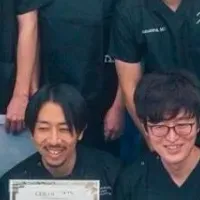
Pharmaceutical Lab Equipment Market Set to Surpass 15.59 Billion USD by 2031 Amid Biopharma Expansion
Growth of the Pharmaceutical Lab Equipment Market
The pharmaceutical lab equipment market is experiencing remarkable growth, driven by an increase in research and development (R&D) activities and the rise of the biopharmaceutical sector. Transitioning from a valuation of USD 11.5 billion in 2024 to a projected USD 15.59 billion by 2031, this market is witnessing a compound annual growth rate (CAGR) of 4.5% during the forecast period. Several crucial factors contribute to this extensive expansion, ranging from technological advancements to regulatory pressures.
Overview of Market Segments
The pharmaceutical lab equipment market is broadly categorized by both type and application. Equipment is segmented into three primary types: pretreatment, reaction, and analysis & testing types. The applications span across various sectors including research institutions and pharmaceutical manufacturing facilities.
Factors Fueling Market Growth
1. Advancements in R&D: The surge in R&D activities has heightened the demand for innovation and modernization in laboratories. Pharmaceutical companies are increasingly investing in new technologies to enhance the drug development process. As a result, the need for advanced lab equipment upscales, supporting diverse testing, analysis, and product formulation activities.
2. Regulatory Compliance: Regulatory agencies like the FDA and EMA enforce stringent quality control measures throughout the drug development lifecycle. This necessitates the acquisition of accurate and certified lab equipment, thereby expanding the market as companies strive to adhere to set guidelines.
3. Emergence of Personalized Medicine: The focus on precision medicine and biologics is changing the landscape of pharmaceutical research. A rising number of biologics such as monoclonal antibodies and gene therapies are pushing labs to adopt equipment that can efficiently manage these intricate requirements, including specialized bioreactors and analytical instruments.
Increasing Demand for Advanced Equipment
The growing complexity of biological samples necessitates sophisticated analysis tools. In particular, instruments like chromatography systems and spectrometers are essential for drug identification, purity testing, and formulation development in an environment where research demands continue to evolve.
Research institutions play an instrumental role in this market. They consume a significant portion of high-precision equipment due to their involvement in vital drug discovery and toxicology studies. The influx of funding through grants and government support enables these institutions to stay at the forefront of technology, thereby fostering innovation and increasing demand for lab tools.
Moreover, companies must maintain a competitive edge to excel in high-impact research publications, driving investments into advanced lab infrastructures and technology.
Trends Shaping the Future
The shift towards outsourcing research activities to contract research organizations (CROs) creates parallel demand for lab equipment capable of managing diverse projects. With the growing reliance on automation in laboratories, robotic sample handlers and AI-powered diagnostics are gaining popularity as organizations look to enhance operational efficiency and reduce human error. Furthermore, modular and cloud-integrated lab solutions enable CROs to deliver high-throughput analysis across various testing protocols, thereby bolstering market demands.
In conclusion, the pharmaceutical lab equipment market is on an upward trajectory, supported by a confluence of factors including evolving technological needs, rigorous regulatory frameworks, and the continued expansion of biopharmaceutical research. As laboratories continue to modernize and leverage automated solutions, the market's growth is expected to be sustained well into the future, addressing the increasing demands of pharmaceutical innovation and healthcare requirements. Supporting this expansion are major players like GE Healthcare, Agilent Technologies, and Thermo Fisher Scientific, which collectively hold a substantial market share, ensuring a competitive landscape rich in opportunity and innovation.
Topics Health)










【About Using Articles】
You can freely use the title and article content by linking to the page where the article is posted.
※ Images cannot be used.
【About Links】
Links are free to use.